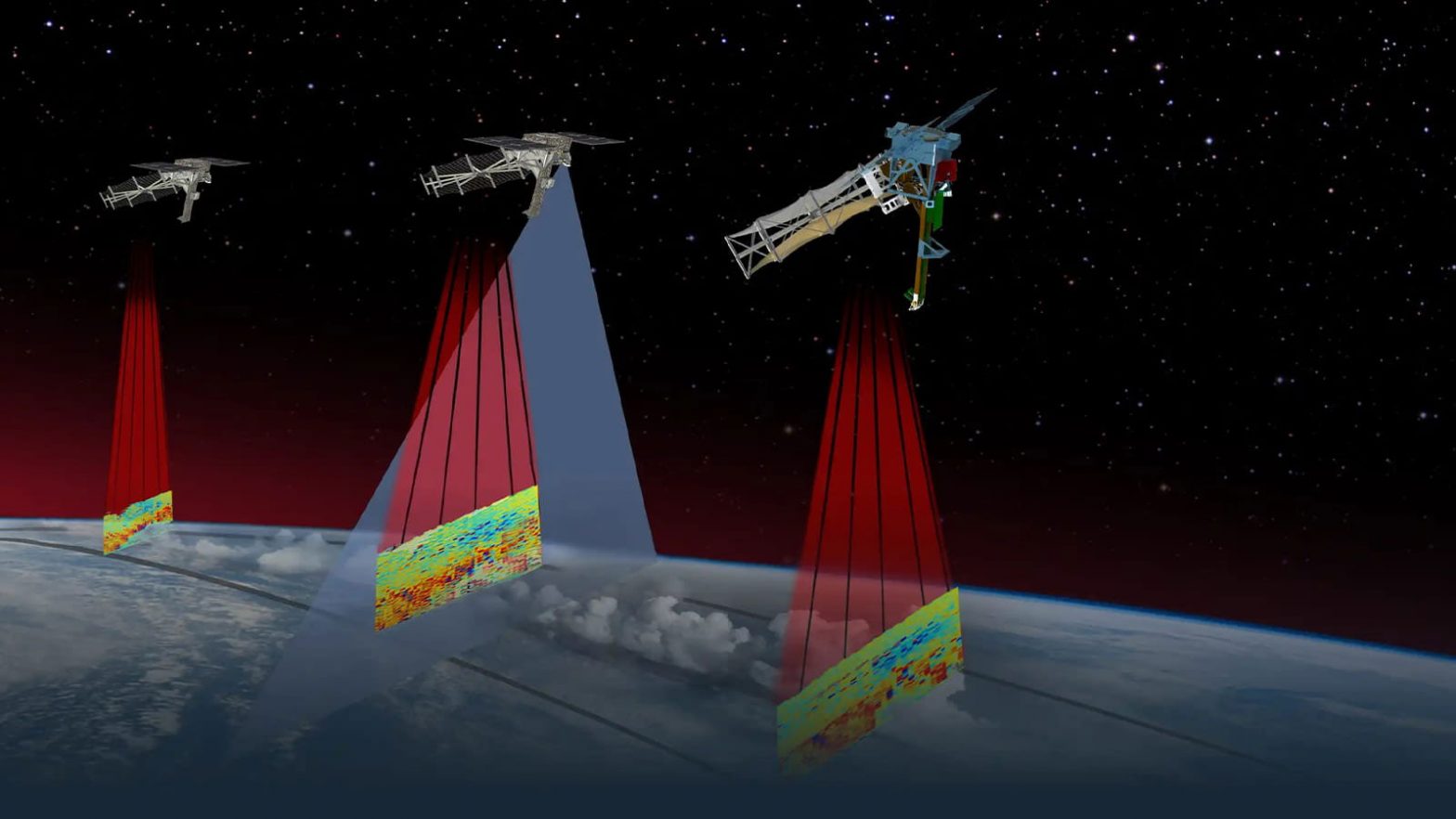Colorado State University, local engineering companies tapped for NASA’s Investigation of Convective UpdraftS (INCUS)
Alex Edwards, The Gazette
Tired of the nebulous possibilities of weather reports in Colorado? Well, hear me and rejoice: Researchers at Colorado State University will lead a NASA mission to provide never-before-seen data that should make weather forecasting more reliable.
The mission is called the Investigation of Convective UpdraftS (INCUS) and will be the third NASA Earth Ventures mission. It will cost $177 million, and feature three small satellites built by Colorado companies. The INCUS mission will use radar to observe thunderstorms worldwide and watch how air and water particles interact in the upper atmosphere to create them. Colorado State University will be the research institution hosting the science data center at the Cooperative Institute for Research in the Atmosphere.
INCUS consists of three small satellites which will follow one another very closely. The gap between the satellites is 30 seconds between the first and second and 90 between the second and third. The trio of satellites will complete about 50 orbits per day, says Kristen Rasmussen, an associate professor at Colorado State University’s department of atmospheric science. She is a coprincipal investigator for the INCUS mission. Susan van den Heever, a university distinguished professor at CSU, is the principal investigator but was unable to comment on this story.
“We are hoping to look at storms of all shapes and sizes, from thunderstorms with very small clouds all the way up to severe weather supercells that produce tornadoes, tropical cyclones and hurricanes,” Rasmussen said. “INCUS will try to estimate how much mass, air and water, is being moved up in the vertical as a result of updrafts.”
The movement of air and water up into the atmosphere – called convective mass flux – affects everything from numerical weather prediction models to climate models, Rasmussen said. This movement acts as the engine that drives storms and INCUS will be able to provide a look into that engine so scientists can see the nitty gritty insides.
But observing convective mass flux requires effective radar that can be easily stowed and deployed in a space no larger than a microwave. That’s where Tendeg, a Louisville based space company that specializes in deployable radar dishes comes in.
“We use a material called mesh, a gold-plated wire which is knit into a pattern that allows it to be really elastic and stretchy,” Gregg Freebury, the co-founder, CEO and principal engineer at Tendeg, said. “Because it acts more like a fabric we can fold it and not damage it, taking a three-meter antenna and packaging it into something that’s only 20 centimeters wide.”
The benefit of the plating also results in a very reflective surface as far as radio frequencies are concerned. This gives the dish several advantages in low earth orbits, but key to a low earth orbit satellite, which INCUS will be, is low atmospheric drag. This means the satellites using a Tendeg dish can stay in orbit longer and carry less fuel should they need to push themselves to a higher altitude and avoid crashing through the atmosphere.
Mesh is the most-used material on Tendeg’s dishes. It also has the advantage of being low mass and as previously mentioned, low volume. Mass and volume are both part of the physics-based puzzle engineers have to solve before launching something into space, though Freebury said mass is becoming less and less of a concern.
While the dish is but one piece of this puzzle, there’s a lot more to the INCUS mission than a radar system. But rather than creating new instruments, which would drive up the cost, researchers at CSU looked to make use of proven tech demos. Specifically, they wanted to combine previous space-borne precipitation radars first flown in 1997 with the homegrown Temporal Experiment for Storms and Tropical Systems (TEMPEST) satellite.
“Our strategy was to take these two proven technologies that already had successful space flights, that already collected data, and combine them,” Rasmussen said. “The radars flew in space on the Tropical Rainfall Measuring and the Global Precipitation Measurement missions… These two satellites with precipitation radars have completely revolutionized our understanding of clouds and precipitation.”
The mission of making this all work falls to Lafayette based Blue Canyon Technologies (BCT), a subsidiary of Raytheon. The small company of just under 500 employees won the contract sent out by NASA’s Jet Propulsion Laboratory (JPL) to build the three satellites needed for INCUS on April 13.
Where CSU primarily handles the science side of the INCUS mission, JPL handles the hardware side, which includes selecting manufacturing companies like BCT.
Blue Canyon Technologies will use their Venus-type bus, which BCT employees are excited to demonstrate the capabilities of. A spacecraft bus enables communication across all systems onboard a satellite, and among other things, the bus keeps a craft in orbit, reports on mission health, and “points you in the right direction,” according to John Valdez, the INCUS program manager at BCT.
As the mission became more concrete, the teams launched studies to outline detailed plans and requirements. At this time, BCT and JPL realized BCT could have more to offer than just the satellite bus.
“We started getting involved in mission meetings and as we progress through the studies and into the design phases, Blue Canyon’s responsibility grew,” he said. “And to me that’s just fantastic, I mean, we’ve been able to link all the services and everything that we offer with this one specific mission for JPL and CSU.”
The INCUS mission does not have a launch vehicle selected yet. It will likely launch in 2027.
[view original article here]
